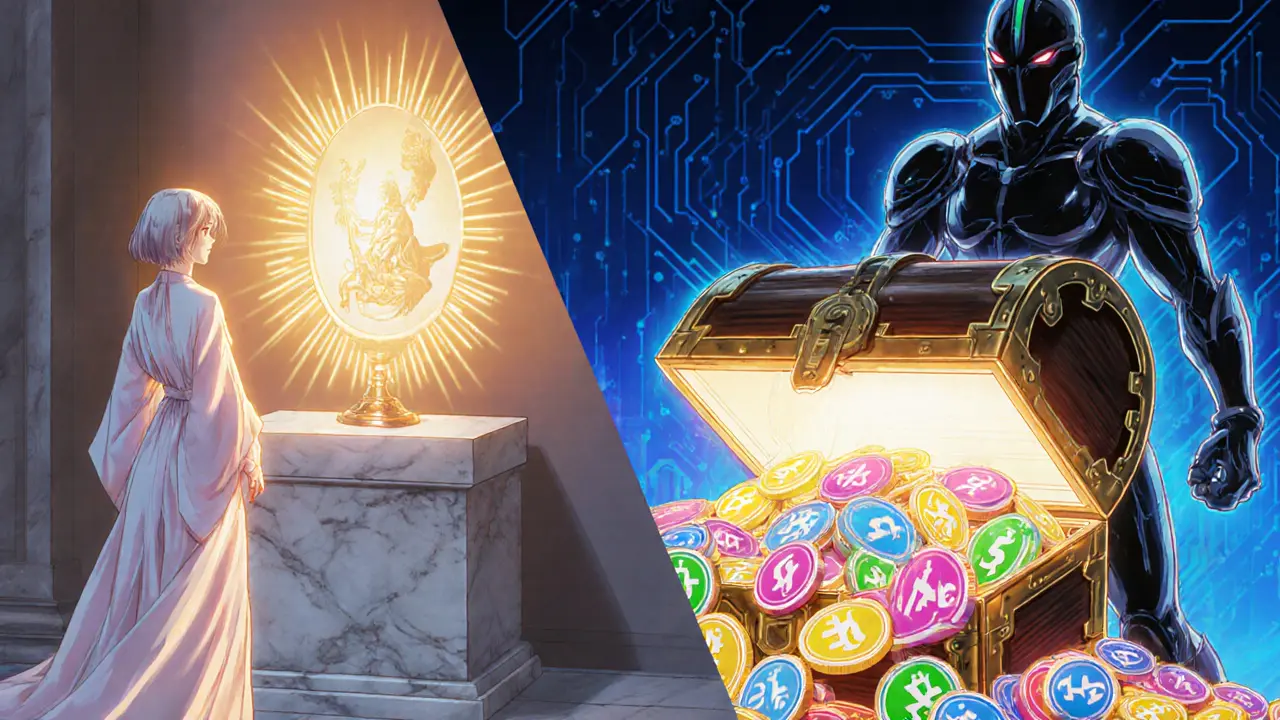ERC-721: The NFT Standard Explained
When working with ERC-721, a protocol that defines non‑fungible tokens on the Ethereum blockchain. Also known as Non‑Fungible Token Standard, it enables each token to have a distinct ID and metadata, making it ideal for digital art, collectibles, and unique assets.
The rise of NFT, non‑fungible tokens that represent one‑of‑a‑kind items owes most of its technical foundation to ERC‑721. An NFT’s uniqueness is guaranteed by the contract’s ability to assign an immutable token ID, while the accompanying metadata links to images, videos, or other data stored off‑chain. In practice, NFT creators write Ethereum, a decentralized platform that runs smart contracts smart contracts that inherit the ERC‑721 interface, then publish their works on marketplaces like OpenSea or Rarible.
Why ERC-721 matters for developers and investors
ERC‑721 encompasses three core attributes: a unique token ID, a metadata URI, and ownership functions (transfer, approve, etc.). Developers rely on these to build games, virtual worlds, and ticketing solutions where each item must be provably scarce. Investors watch ERC‑721 projects because the standard’s on‑chain provenance makes it easier to verify authenticity and assess market demand. The standard also requires compliance with the ERC‑165 interface detection, letting wallets and browsers recognize NFTs automatically.
Beyond NFTs, the ERC‑721 blueprint influences newer standards like ERC‑1155, which combines fungible and non‑fungible assets in a single contract. This evolution shows how token standards influence each other, pushing the ecosystem toward more flexible and cost‑effective solutions. For anyone building a DeFi product that uses NFTs as collateral, understanding ERC‑721’s ownership model is essential, as it dictates how the token can be locked, transferred, or liquidated.
Marketplace platforms depend on ERC‑721’s metadata field to display item details. A well‑structured JSON file hosted on IPFS or Arweave provides the image URL, description, and traits, which browsers render instantly. Without this standard, each marketplace would need a custom integration, fragmenting the user experience. By adhering to ERC‑721, creators enjoy a single publishing workflow while buyers benefit from cross‑platform visibility.
Security also ties back to the standard. Since every token has its own ID, smart contracts must implement proper access controls to avoid unauthorized minting or transfer. Auditors look for patterns like “onlyOwner” checks and re‑entrancy guards, which are especially critical when NFTs represent high‑value assets such as virtual land or rare collectibles. The community has built best‑practice libraries (OpenZeppelin’s ERC‑721 implementation) that reduce the risk of bugs.
From a regulatory perspective, ERC‑721 tokens raise questions about ownership rights, intellectual property, and tax treatment. While the code records who holds a token, the legal title to the underlying artwork may still belong to the creator unless explicitly transferred. Understanding the gap between on‑chain ownership and off‑chain rights helps investors navigate potential legal pitfalls.
Current trends show that ERC‑721 is expanding beyond art. Gaming projects mint in‑game items, sports franchises issue digital collectibles, and even real‑world assets like property deeds are being tokenized using ERC‑721 contracts. This diversification demonstrates the standard’s flexibility and why it remains a cornerstone of the broader blockchain ecosystem.
For those new to the space, a practical first step is to explore an ERC‑721 contract on a testnet, read the source code, and try minting a simple token. Hands‑on experience demystifies concepts like token URI and ownership events, making it easier to evaluate projects that claim to use the standard.
Below you’ll find a curated list of articles covering everything from token economics and airdrops to exchange reviews and security best practices—all linked by their relevance to ERC‑721 and the NFT landscape. Dive in to see how each piece fits into the bigger picture of non‑fungible tokens and the blockchain world.
ERC-721 vs ERC-1155: Which NFT Standard Fits Your Project?
A side‑by‑side breakdown of ERC‑721 and ERC‑1155, covering gas, security, implementation, use cases and a quick decision guide for developers.

